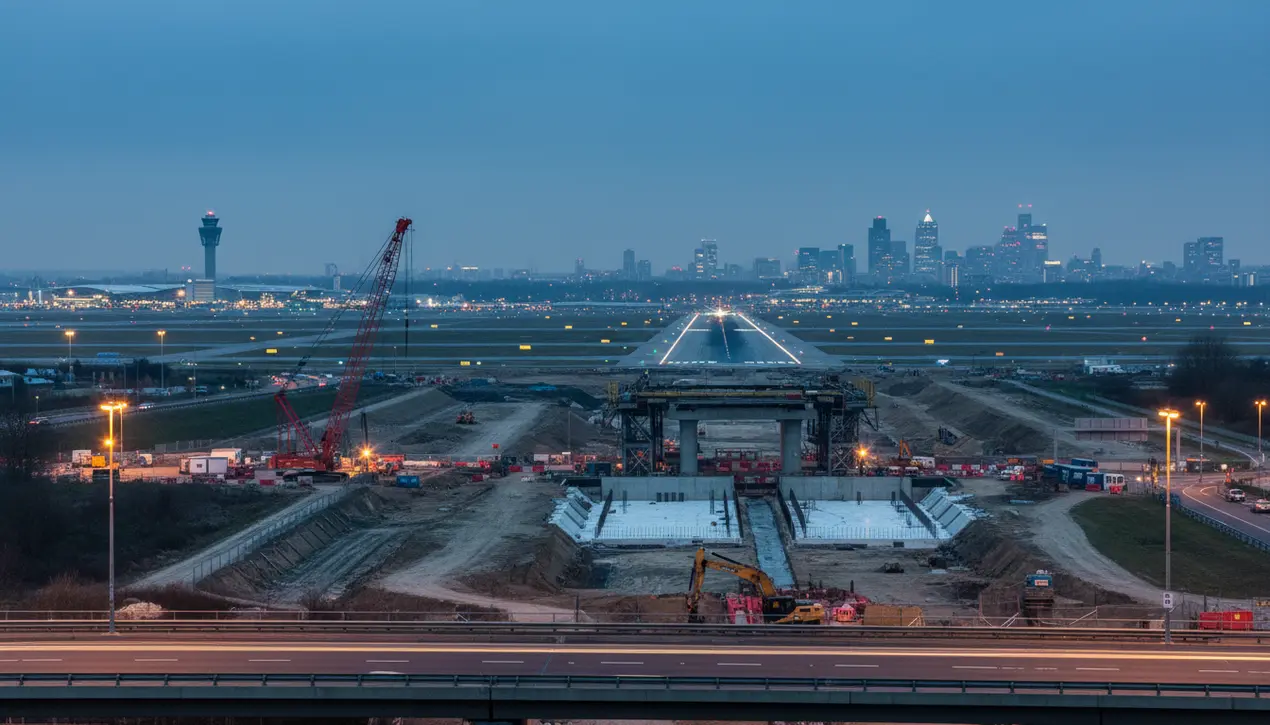
Othertransport & aviationInfrastructure Projects
Heathrow airport’s £33bn third runway plan chosen by government
OL
Oliver Scott
8 hours ago7 min read2 comments
In a high-stakes decision with profound implications for Britain's economic future and environmental standing, the UK government has thrown its weight behind Heathrow Airport's £33 billion blueprint for a third runway, selecting the most ambitious and costly option—a 2. 2-mile north-western strip that will necessitate the audacious engineering feat of rerouting a segment of the M25 motorway.This endorsement of the airport's own plan, deemed the 'most credible and deliverable option' over a rival submission from the Arora Group, effectively greenlights a project that could see up to 760 additional aircraft traversing London's skies daily by an operational target of 2035. The choice represents a significant political and financial gamble, placing a colossal bet on the unyielding growth of aviation demand despite looming climate targets and persistent local opposition.From a risk analysis perspective, the government is navigating a complex matrix of competing pressures: the immediate economic imperative to bolster the UK's global connectivity and post-Brexit competitiveness versus the long-term environmental and social liabilities. The sheer scale of the investment—£33bn—introduces substantial execution risk; any delays, whether from legal challenges by environmental groups like Greenpeace or unforeseen construction complications with the M25, could exponentially inflate costs, creating a scenario reminiscent of other megaprojects that have buckled under financial overruns.Furthermore, this decision creates a tangible geopolitical friction point, pitting the UK's national economic strategy against its international climate commitments, potentially inviting criticism at future COP summits and testing diplomatic relations with European neighbours concerned about transboundary emissions. The strategic calculus appears to be that the benefits of securing Heathrow's status as a premier global hub, thereby attracting business and tourism, outweigh the acute risks of increased noise pollution, localized air quality degradation, and the broader carbon footprint.However, this is not a contained risk; it sets a precedent that other nations might follow, potentially triggering a domino effect of airport expansions worldwide, thereby undermining global aviation emission targets. The government is essentially betting that future technological advancements in sustainable aviation fuel and cleaner aircraft will mitigate these environmental externalities, a high-stakes wager on innovation that is far from guaranteed.The alternative, the Arora Group's proposal, likely represented a lower-cost, lower-disruption option, but was apparently judged as offering insufficient capacity or strategic advantage for the long term. This decision is less about solving a current capacity crunch and more about a strategic positioning for the 2040s and beyond, a classic long-term infrastructure play fraught with uncertainty.The coming decade will be a critical test of the government's risk management, as it must now shepherd this behemoth project through a minefield of public inquiries, potential judicial reviews, and volatile economic cycles, all while maintaining political consensus. The ultimate consequence extends far beyond West London; it is a definitive statement on the UK's chosen trade-off between economic growth and environmental sustainability in the 21st century.
#lead focus news
#Heathrow Airport
#third runway
#M25 motorway
#expansion
#government approval
#aviation capacity
#London
Stay Informed. Act Smarter.
Get weekly highlights, major headlines, and expert insights — then put your knowledge to work in our live prediction markets.
Comments
Loading comments...
© 2025 Outpoll Service LTD. All rights reserved.